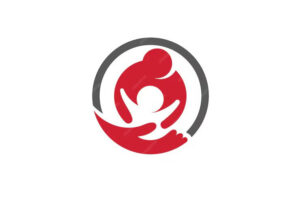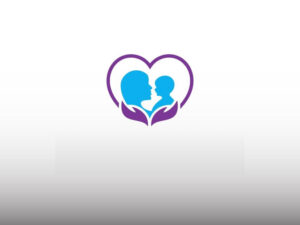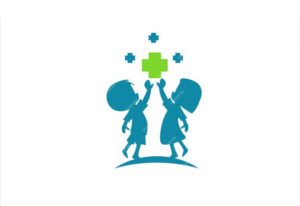Child abuse and neglect (CAN) is defined as maltreatment of children by the parents, guardians or other caretakers. Almost 75% of abuse recognized in the hospitals in physical. Rest of the 25% cases are of psychologic/emotional abuse, sexual abuse or nutritional deprivation leading to failure to thrive. As and when you encounter a child in whom it is clear that the history of injuries, etc. narrated by the attendants is at variance with the actual observations made by you, you must suspect child abuse. In particular, consider this diagnosis when the child presents with multiple hematomas, multiple fractures and scars, multiple cuts, bruises and abrasions, burns, strap marks, cord marks, trauma to genitals, and malnutrition (in a child who appears to be unwanted). A large majority of parents who abuse their children are the ones who had experienced physical or other abuse as children. They are neither criminals or psychopaths, but just unhappy adults (because of some family crisis) living under tremendous stress and strain. The susceptible child is one who has negativism, a difficult temperament and such offensive behavior as enuresis, soiling, habitual crying and spilling. More often than not there is considerable delay in seeking medical advice.
Physical Abuse
The most important clue to physical abuse is that the injury is unexplained—often far-too-much for the history of a minor accident. Injuries usually seen include bruises, welts, lacerations and scars. The arms may reveal finger and thumb impressions of the abuser. Thrashing with a belt, sticks or ruler may leave lash marks on the body. Bite marks are seen as crescent-shaped bruises.
Slap marks are visible as two to three parallel bruises, usually over the cheeks. The neck may reveal choke marks. Strings or ropes tied round ankle or wrists leave circumscribed marks. Occasionally the shape of a bruise may point to the instrument used to cause it. An important point to remember in physical injury as a result of abuse is that bruises are found at various stages of healing. Inflicted burns are usually caused by holding the child forcibly in hot water as a punishment for bed wetting or failure in bowel control. A circular type of burn involving only the buttocks or thighs and waist is the most frequently seen in hot water injury. Cigarette burns, usually found overhands and feet, are seen as punched out circular lesions of nearly the same size. Hot solid burns produced by placing the child against a hot plate or heating develop characteristic shape. Child abuse may result in as dangerous an injury as subdural hematoma, manifesting with convulsions and coma owing to the increased intracranial pressure. In half of the cases, skull fracture(s) may also be detected. Fundoscopy almost always shows presence of retinal hemorrhages. Since cases of subdural hematoma in battering are usually the result of violent shaking injuries, you may be able to locate grab mark bruises of upper limbs, shoulders and chest. Another type of dangerous injury in battering is the blow injury over the abdomen, causing rupturing of liver or spleen. Infrequently, tear injury of duodenum or jejunum may occur. The child with intra-abdominal injury presents with recurrent vomiting, abdominal distention, tenderness, sluggish or even absent bowel sounds and shock. Remember, it is advisable to have a good radiologic bone survey including skull, long bones, and thorax, and if indicated, pelvis and spine. Such findings as chip fractures or multiple bone injuries at various stages of healing due to repeated assaults are very helpful in reaching the diagnosis.
Sexual Abuse
Sexual abuse occurs from three sources. First, sexual maltreatment by a family member, usually the father or an uncle, on a child
who may well be an adopted or a step one. Second, sexual abuse by friends and acquaintances of the child or family. Third, sexual abuse by strangers. Molestation, intercourse and rape are the three types of sexual abuse encountered in practice. Since in a large majority of the cases of sexual abuse, there is no definitive physical findings, a sensitive and tactful handling of history-taking is needed. The physician ought to learn child’s vocabulary and use dolls and pictures to clarify body parts and to build-up the story rug-by-rug. Skin, mouth, rectum and external genitals should be especially examined for signs of trauma. A hymenal opening of 5 mm or more is to be considered abnormal in a prepubertal girls.
Nonorganic Failure to Thrive
An unwanted and unplanned child’s feeding may be terribly neglected. Emotional and nutritional deprivation eventually leads to malnutrition. The examination of such a child shows, besides signs of nutritional deficiencies, stark hygienic neglect as evidenced by a nappy rash, impetigo or scabies, unwashed skin, uncut finger and toe nails, and dirty clothing. When such a child is admitted to the hospital and fed generously on a diet appropriate for age in the new setting and also given enough of love for at least a week, his weight gain becomes remarkably impressive.
D/D of CAN from Some Other Disorders
Scurvy, no doubt, produces subperiosteal hemorrhage in the lower third of the femur, leading to pain and pseudoparalysis and thus confusion with battering. The presence of spongy, swollen, bluish purple gums, scorbulic rosary, follicular hyperkeratosis with minute hemorrhages at the root of hair follicles together with radiologic bony changes* at and around knee joint are classical of scurvy. Moreover, signs in scurvy are usually bilateral. Syphilis may manifest in the form of tender swelling in connection with bones and Parrot’s pseudoparalysis as a result of osteochondritis. Radiologic findings include destruction,
* Radiologic bony changes simulating scurvy are seen in Menke’s Kinky
hair disease as we
thickening and irregular borders of metaphysis, destructive changes at diaphysis, transverse bands at metaphysis, and subperiosteal thickening with hyperostosis. Serological tests for syphilis are positive. Caffey disease, also called infantile cortical hyperostosis, manifests with fever followed by marked swelling of soft tissues of face and jaws and progressive thickening of flat and long bones such as scapula, clavicle and tibia. The course is characterized by waxing and waning. After several years, spontaneous cure occurs. Chronic hypervitaminosis A may present as tender swellings of bones. The accompanying symptoms include failure to thrive, anorexia, irritability, alopecia, seborrhea, angular stomatitis, craniotabes, desquamation of palms and soles, hepatomegaly and pseudotumor cerebri. History of excessive intake of vitamin A and hyperostosis of long bones, best seen about the middle of the shaft in X-ray, confirm the diagnosis. Osteogenesis imperfecta tarda often presents with fractures resulting from minimal trauma. Presence of such findings as blue sclerae, skeletal deformities, short stature and deafness helps in reaching this diagnosis
FURTHER READING
- Alexander R, Levitt C, Smith W. Abusive health trauma. In: Reece R, Ludwig S (Eds): Child Abuse: Medical Diagnosis and Management, 2nd edn. Philadelphia: Lipincott, William and Wilkins 2001. 2. Gupte S. Child abuse and neglect. In: Gupte S (Ed): The Short Textbook of Pediatrics, 11th edn. New Delhi: Jaypee 2009:724-726. 3. Mehta MN. Physical abuse of abandoned children in India. Child Abuse Neglect 1982;6:171-5. 4. Mishra D, Aggarwal K. Child abuse and neglect. In: Gupte S (Ed): Recent Advances in Pediatrics-16. New Delhi: Jaypee 2006:370-400.
RELATED POST

Empyema Thoracis

Bell Palsy (Peripheral Facial Palsy)

Opportunistic Infections









